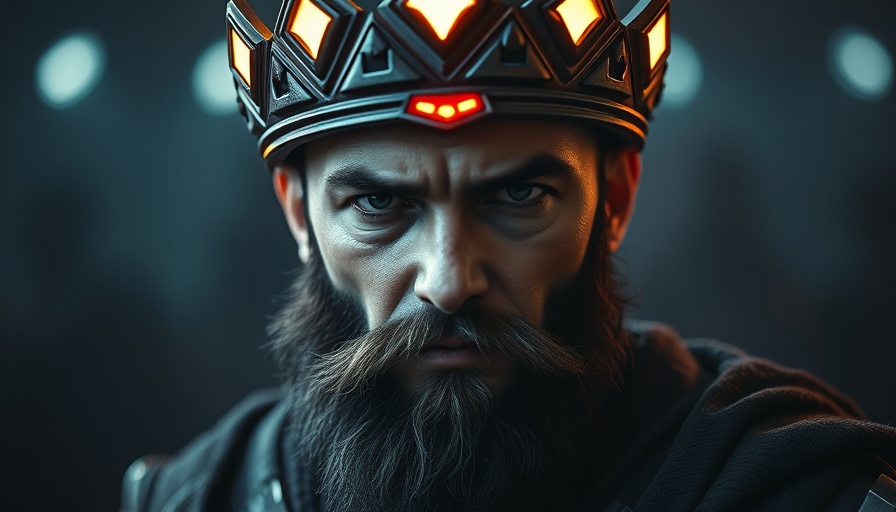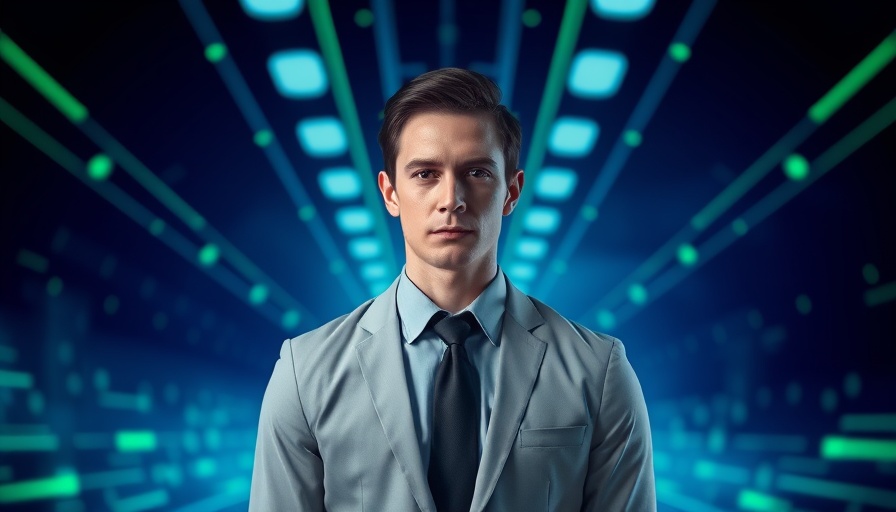
Unveiling the Future: Google DeepMind’s Veo3 AI in Video Generation
In the rapidly evolving landscape of artificial intelligence, Google DeepMind has once again raised the bar with the unveiling of its latest tool: Veo3 AI. This new video generation technique heralds a revolution in content creation, enabling users to transform a simple text prompt into a compelling video, complete with synchronized audio and emotional nuance. For many, this innovation brings forth questions about the implications for creators and consumers alike.
In 'DeepMind’s Veo3 AI - The New King Is Here!', the discussion dives into revolutionary advancements in AI video generation, exploring key insights that sparked deeper analysis on our end.
What Makes Veo3 Stand Out?
Traditional AI video generators often produce static, uninspired outputs from bland prompts. In contrast, Veo3 allows for dynamic storytelling, capturing shifting scenes that engage viewers' imaginations. For instance, visualizations like a feather trapped in a spider web or a whimsical paper boat can spring to life from mere sentences.
Additionally, the ability to incorporate imagery as references means that users can insert their own photos into unreal environments, allowing for visual experiences tailored to personal narratives. Imagine appearing in stunning locations you’ve only dreamed of—all thanks to a few words and some clicks!
The Ten Innovations of Veo3: Enhancing Video Production
DeepMind's Veo3 introduces ten groundbreaking capabilities:
- Dynamic Scene Evolution: Unlike other generators, Veo3 creates scenes that evolve meaningfully.
- Reference-Powered Videos: Incorporate personal pictures for a tailored experience.
- Style Matching: Use images as style references to create diverse visual tales.
- Character Consistency: Maintain character design across various scenes seamlessly.
- Selecting Frames: Give the first and last frame, and let the AI work its magic.
- Zoom Control: Enable effortless zooming in or out in scenes.
- Scene Augmentation: Introduce new objects seamlessly into existing scenes.
- Character Control: Animate characters from a provided target image.
- Movement Direction Registration: Direct clip movement by marking imagery.
- Scholarly Foundations: Acknowledge the research fueling this breakthrough.
Each of these features transforms the video creation process, making it more artistic and personalized.
The Future of Video Creation
This potent tool is an exciting glimpse into the future of creativity. It poses many questions about originality, copyright, and the nature of content creation. Will the human touch still hold value in scenarios increasingly managed by AI? As business owners and educators consider incorporating such tools, it raises discussions around ethics in technology.
Why This Matters
The implications of Veo3 reaching a broad audience are profound. For business owners, this means elevating marketing content with unique and personalized videos that captivate audiences. Students and teachers can create engaging educational materials that cater to individual learning styles.
The ability to produce videos effortlessly could democratize content creation, allowing anyone with a story to share it without extensive resources. But with this power comes the need for responsibility:
How do we ensure that innovation doesn't compromise authenticity? Educators and creators will need to consider these emerging ethical discussions.
In the age of AI, Google DeepMind's Veo3 propels us into a new frontier of video production, innovating how we tell stories and express individual creativity. Its multifaceted functionalities evoke excitement and curiosity, inviting us to rethink our approach to content creation. As we stand on the cusp of what’s possible, it’s a thrilling time to explore how technology will shape our lives.
 Add Row
Add Row  Add
Add 




 Add Row
Add Row  Add
Add 

Write A Comment